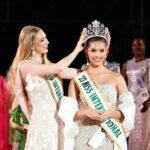The plane finally landed at Caracas Airport. Before arriving, I had researched the city and found that Caracas ranks as the most dangerous in South America, even surpassing Colombia, and is often compared to Lagos, Nigeria. Having visited Lagos—a place where gunshots ring out at night and stepping outside the hotel feels unsafe—I knew Caracas might present a similar experience. Now, the real encounter with Venezuela begins.
It was Sunday afternoon when I arrived, and the road from the airport to the city was packed with traffic, as people were returning from weekend getaways. Venezuela’s infrastructure is poorly developed, and Caracas, with its dense population, suffers from severe traffic jams. The country allows unrestricted imports of used cars, so old vehicles dominate the roads, spewing black smoke. It’s common to see broken-down cars being repaired along the roadside, with women working on them too—something rarely seen elsewhere.
After nearly two hours, I finally reached the Melia Hotel, a four-star Spanish chain. While the lobby is spacious, the room facilities are outdated, but in Caracas, it’s considered a good hotel—mainly because it offers a sense of security.
Caracas has the worst public safety in South America, outranking Bogotá in Colombia. Without a trustworthy driver, taking a taxi is out of the question, as you can never be sure where the driver will take you or what awaits you. Beyond friends, the safest option is to arrange transportation through the hotel, as it ensures reliability. In Caracas, safety is paramount—far more important than worrying about costs.
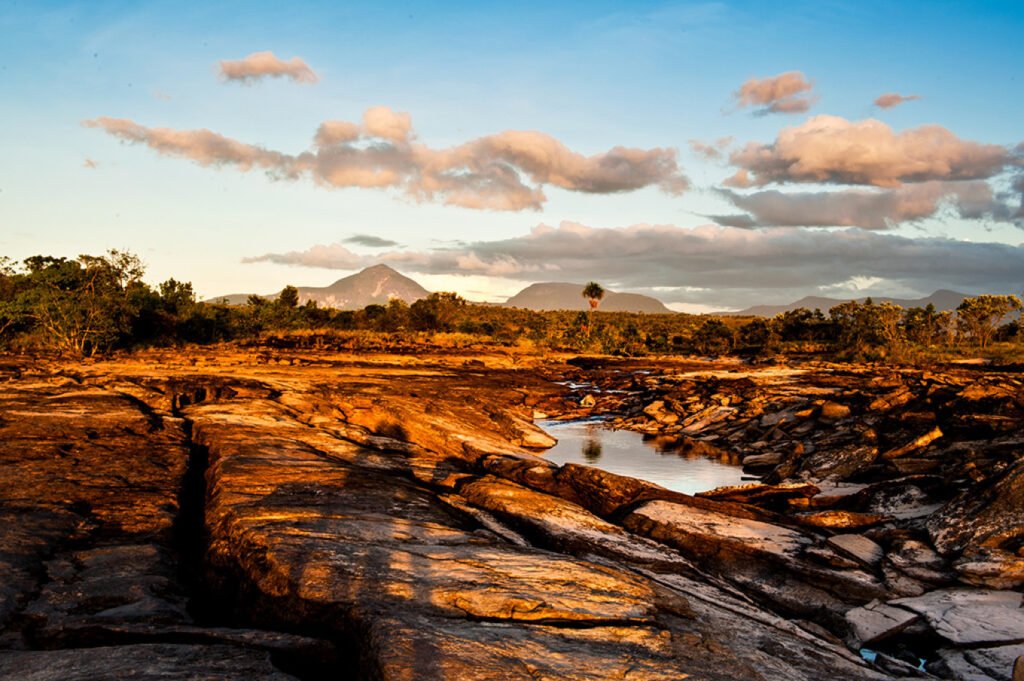
Canaima National Park – A Journey to Waku
Canaima National Park, established in 1962, spans 30,000 square kilometers in southeastern Venezuela, situated along the upper reaches of the Carrao and Caroní Rivers on the Guiana Highlands. It is Venezuela’s largest nature reserve, with around 65% of its terrain covered by tabletop mountains (tepuis). The park’s most famous attraction is Angel Falls, which cascades from the summit of Auyán-Tepui with a height of 978 meters, making it the tallest waterfall in the world. Many travelers to Venezuela come specifically for Canaima.
Day 1:
At 4:30 a.m., we left the hotel and headed to the airport, ready to explore the mystical land of Canaima. Luckily, Canaima is considered safe—troublemakers can’t reach this remote area, which is accessible only to tourists.
There are no roads leading to Canaima, and the only way to get there is by air. However, flights are indirect. First, we took a one-hour flight from Caracas to Puerto Ordaz Airport, where we had to wait over five hours for the next leg. We finally boarded a 15-seater plane. A European couple, who had been scheduled to transfer to Canaima the day before, had to stay overnight in Puerto Ordaz because no flight was available. Today, they joined us for the journey.
The small plane covered the 300-kilometer distance in just half an hour, delivering us to the remote beauty of Canaima.


Canaima Airport feels like a school playground, with its simple thatched waiting area exuding a distinct Indigenous charm. We had booked a 3-day, 2-night package, staying at the Waku Resort, whose open-top vehicle came to pick us up. The ride took us along dirt roads lined with small villages, and in about ten minutes, we arrived at the Waku Resort.
Perched along the edge of Lake Canaima, the moment we reached Waku, all the frustration of layovers and the struggle of waking up early vanished. This place felt like a hidden paradise—pristine and peaceful. The scenery was breathtaking, with towering trees, serene lakes, and wildlife roaming freely, while waterfalls cascaded nearby.
The accommodations were clean and designed with a rustic charm. The row of bungalows, topped with thatched roofs, blended seamlessly with the local environment. Inside, however, the rooms were modern and comfortable. Each room had a porch with a hammock, two wicker chairs, and a small coffee table—meeting the standards of a small, five-star boutique resort. The resort grounds were filled with exotic plants and flowers.
That afternoon, our adventure began with a boat trip to a nearby waterfall. Along the shores of Lake Canaima, grasslands stretched endlessly, connecting one lake to another, with waterfalls dotting the landscape. The surrounding mountains were tepuis—flat-topped mesas resembling South Africa’s Table Mountain.
We ventured beneath one of the waterfalls, where European tourists changed into swimsuits to enjoy a refreshing shower under the cascade. Afterward, we continued to the lake at the foot of the mountain, its clear, inviting waters impossible to resist. While others swam, I took the opportunity to capture the moment with my camera.
The day ended with a climb to the top of a tepui, perfectly timed with the golden hour. The rocky terrain, trees, and distant peaks were bathed in deep crimson light, while the sky scattered with fluffy clouds completed the scene—like a breathtaking masterpiece painted by nature itself.
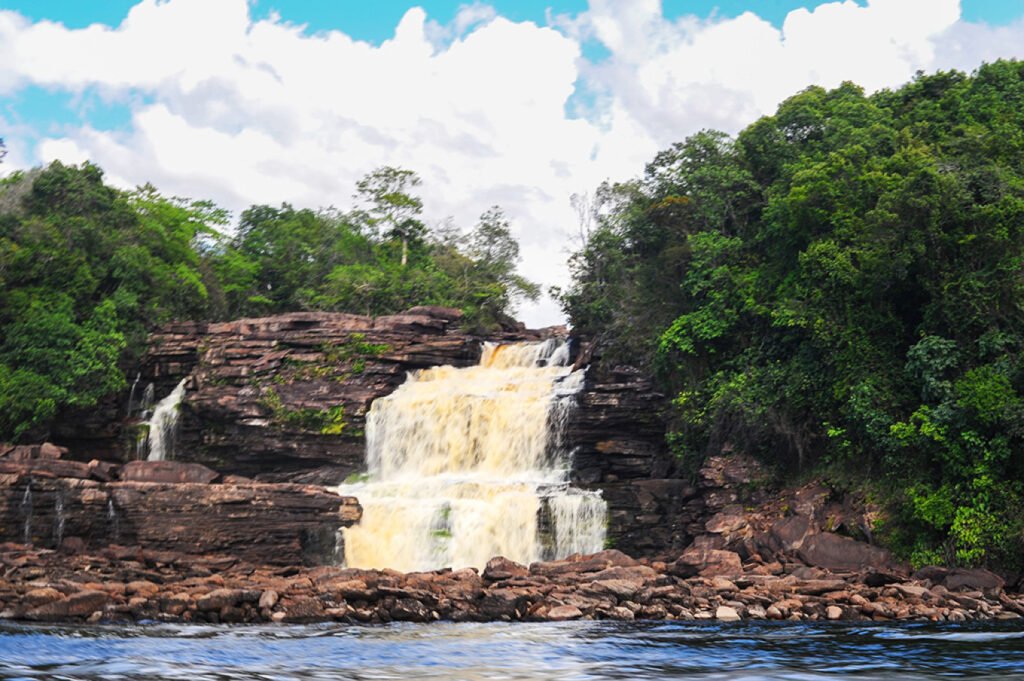
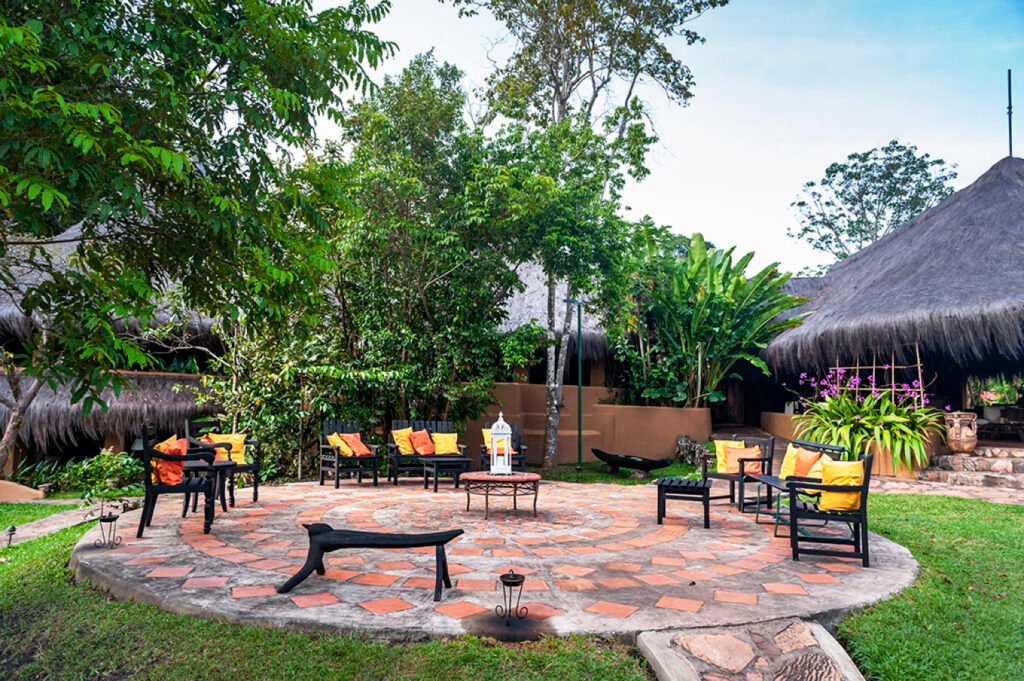
In the evening, we returned to Waku Resort, freshened up, and followed a fragrant path to the restaurant. The restaurant’s roof was also thatched, and the tables were set with American-style dinnerware in an Indigenous design. With no glass windows, the open railings allowed us to gaze out at the distant waterfalls. Lovely Indigenous women served the guests, adding to the charm of the experience. The food was excellent, with the highlight being a rich, flavorful soup. Candlelight flickered across the table, casting soft reflections—delicious food, delightful ambiance, pure enjoyment.
At the front desk, we booked the next day’s Angel Falls tour. The itinerary was packed with adventure, including a visit to a tepui once devastated by fire, an exploration of the Churún River, and the grand finale—Angel Falls.
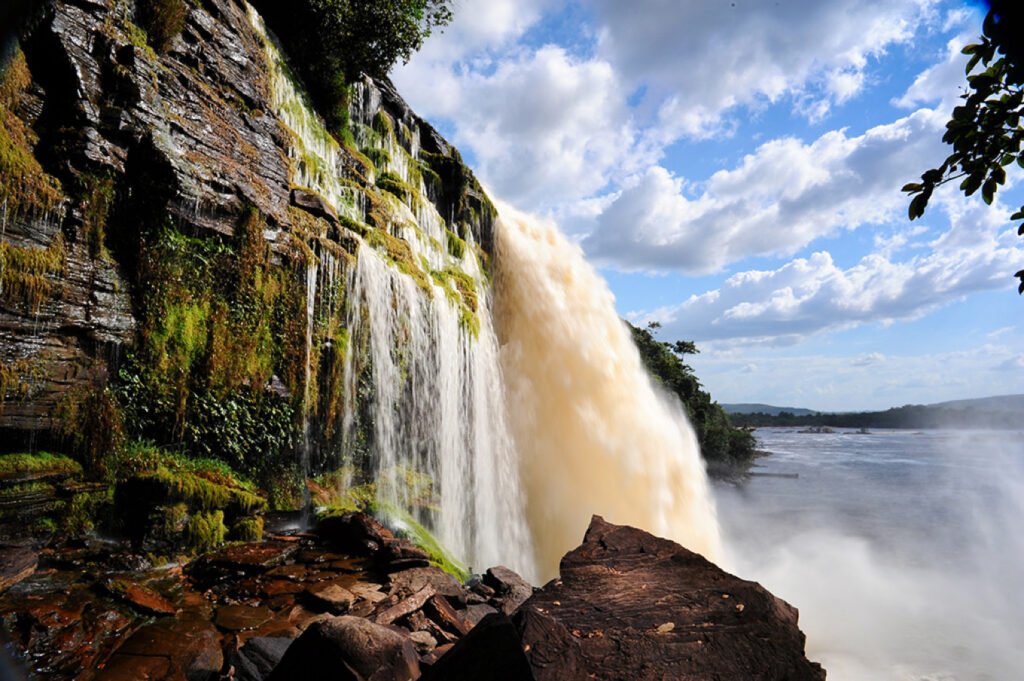
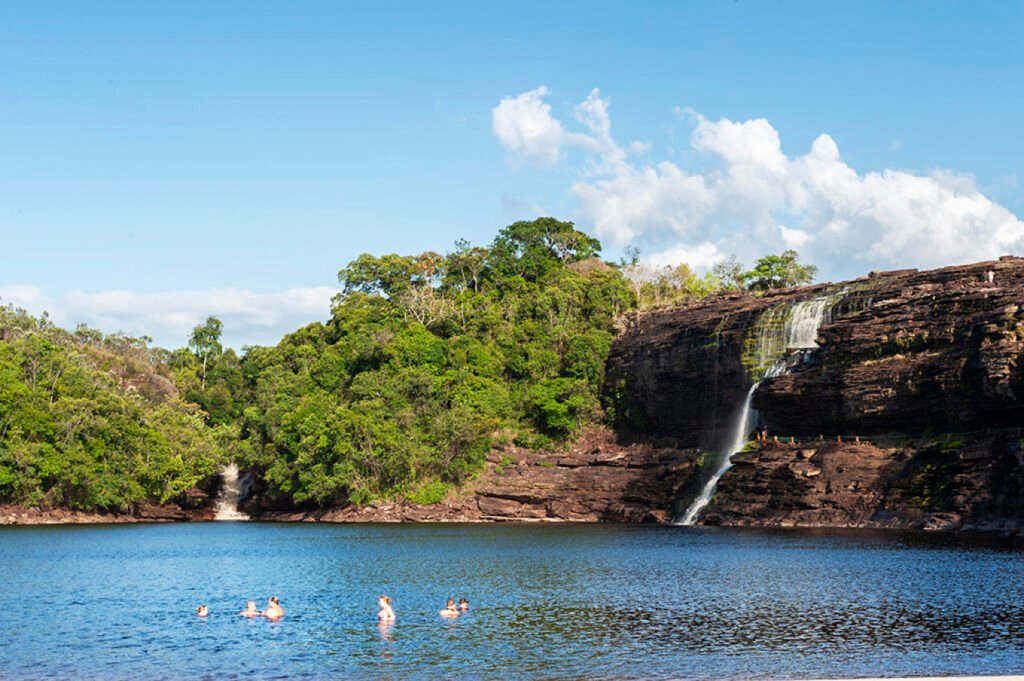
Angel Falls
Day 2:
We woke up at 4:30 a.m., greeted by the faint light of dawn. Boarding a traditional Indigenous canoe, we glided along the river until we reached the base of a mountain, where we left the boat and continued on foot. The climb wasn’t difficult—this mountain was lower than the tepui we hiked the previous afternoon.
At the summit, we found a plateau covered in fresh grass. This area had once been ravaged by fire, leaving some fallen trees and new saplings struggling to grow. The scene was untouched and raw, a perfect glimpse of nature in its most unrefined state.
In the middle of the plateau ran a narrow dirt trail, known as the traveler’s path. Our group for this trek consisted of seven people: a Swiss diplomat couple, a British-Swedish married pair, a local from Caracas named Lucy, and the two of us.
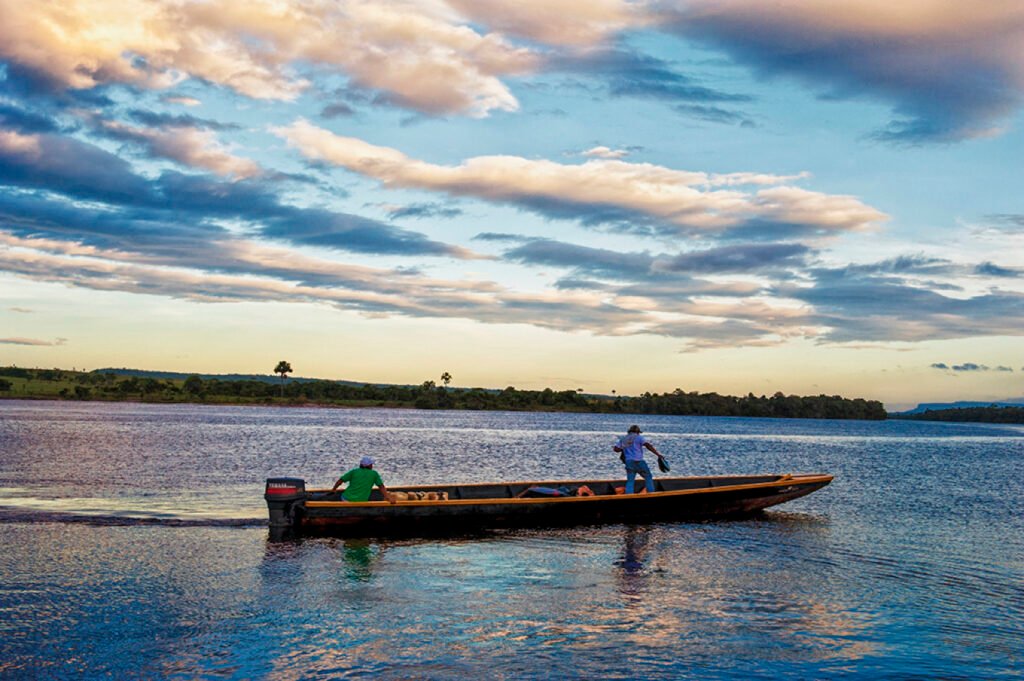

We continued to the far side of the tepui, where the Indigenous boatman was already waiting for us by the riverbank. We boarded the canoe and began our journey upstream along the Churún River. The river stretched endlessly, its waters varying in depth, winding through countless bends. On one side lay dense jungles and towering mountains. The rushing water was the only sound to accompany us—traveling here felt like being cut off from the rest of the world.
After about 1.5 hours on the river, we reached a riverside campsite and disembarked for a rest. The Indigenous boatman prepared a hearty breakfast for us, complete with coffee, milk, bread, beverages, and water. In front of us stood a panorama of mountains, reinforcing the sense that Canaima is steeped in mystery. Traveling along the Churún River, it became clear that every stretch of the river held new beauty—just nature, with no interruptions from the outside world.
After a half-hour break, we boarded the canoe again, continuing our journey toward the awe-inspiring Angel Falls.
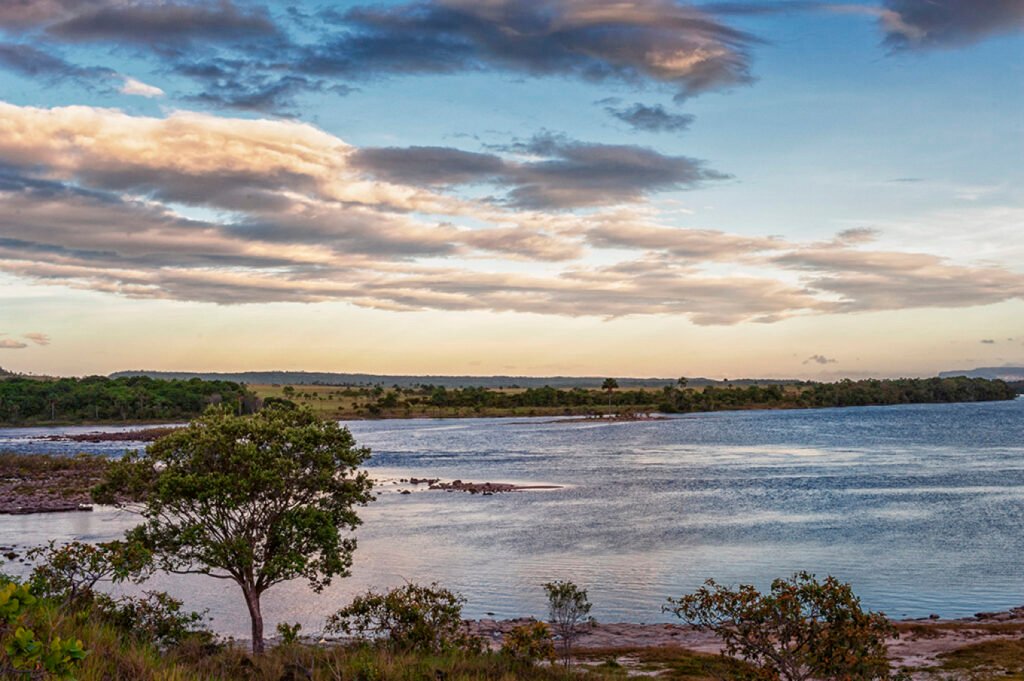
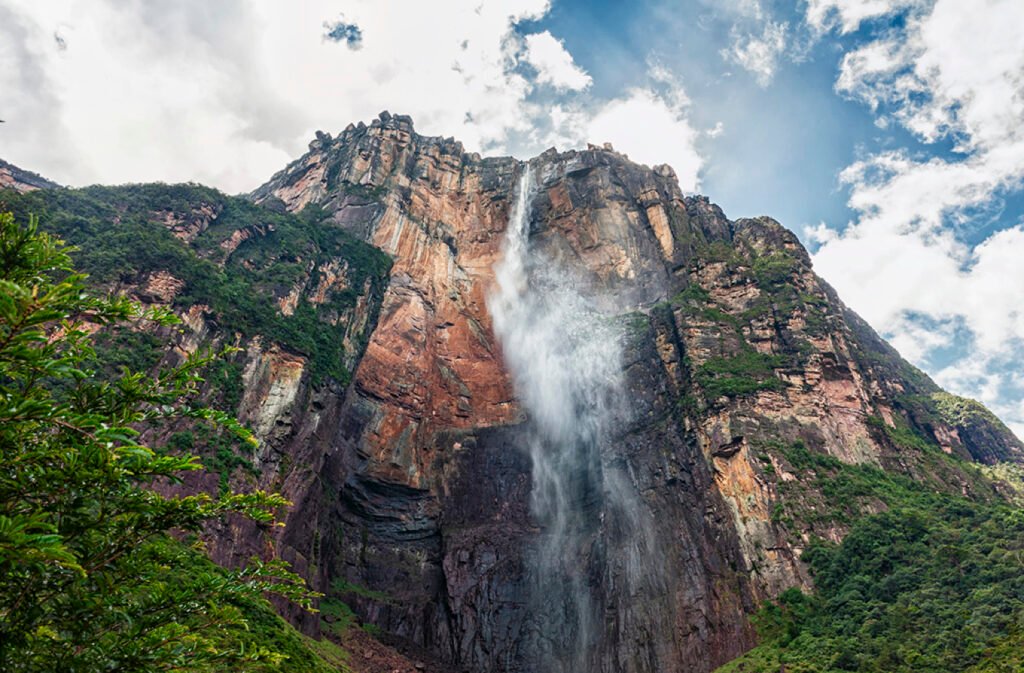
After about an hour, we reached the base of Angel Falls. From a distance along the Churún River, the falls were visible in their full glory. However, once at the foot of the mountain, the falls became hidden from view. Since Angel Falls cascades from the summit of Auyán-Tepui, the dense tropical forest covering the slopes obscures the view from below.
Upon arrival, we disembarked at a resting spot where the Indigenous boatman began preparing lunch for us. Unfortunately, the Swiss diplomat had injured her knee and couldn’t make the climb, so she stayed behind while the rest of us pressed on.
The trail up the mountain was rugged—no stairs, no clear path, only patches of dirt winding through the tangled roots of the jungle trees. With the help of our fellow travelers and the Indigenous guide, we made our way up, sweating profusely and gasping for breath. Following faint footprints through the forest, we finally emerged at the highest viewpoint for the falls.
There was no observation deck, just a large rock perched at the edge of the mountain. Beside it stood a simple wooden sign that read: Sailto Angel.
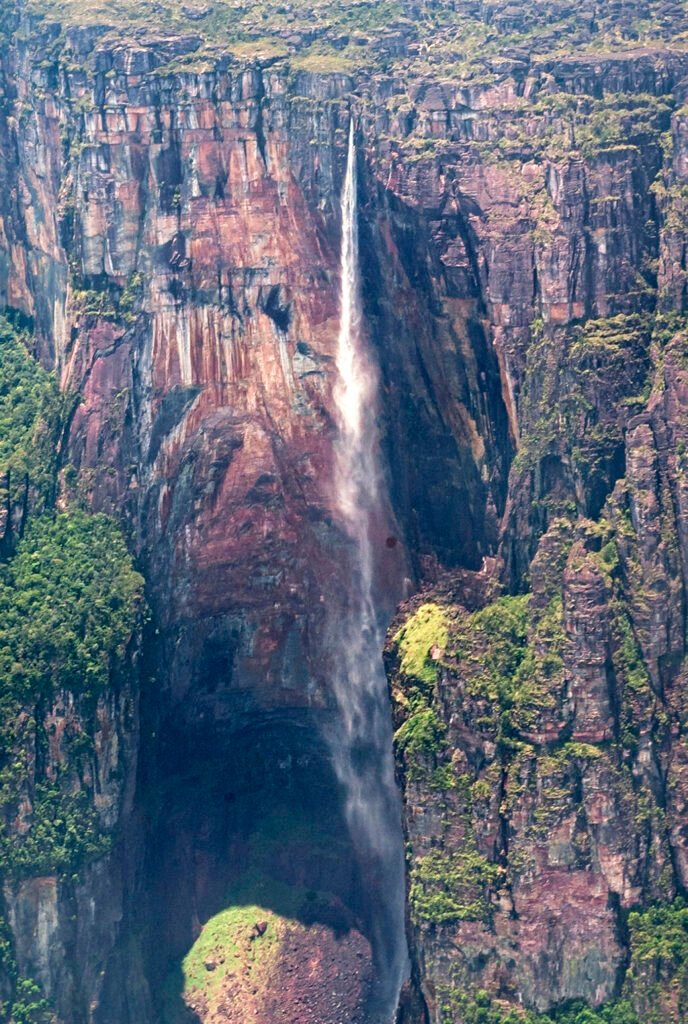
Lunch was exceptionally delicious. Our Indigenous hosts grilled chicken for us and served beer, soft drinks, and rice. These humble brothers did everything—they navigated the boat, cooked our meals, and guided us through the jungle. We felt deeply grateful for their hospitality and hard work.
At 4 p.m., we boarded the boat and began our journey back to Waku along the Churún River. By the time we arrived, the sky was filled with stars. After showering and changing, we headed to the restaurant for a relaxing dinner. The comfort and peace of that moment made us feel more pampered than royalty.
Later that evening, we sat on Waku’s open-air wicker sofas, gazing up at the stars. It was no longer a life of rising with the sun and sleeping with its fall—instead, we ventured out under the stars and returned beneath the moonlight, wrapped in their quiet brilliance.
Day 3:
With a midday flight ahead, we enjoyed a leisurely morning, sleeping in and taking time to capture the beauty around us. We snapped a few photos of the landscape, wildlife, and each other by the lake, in front of the bungalow, and around the garden.




